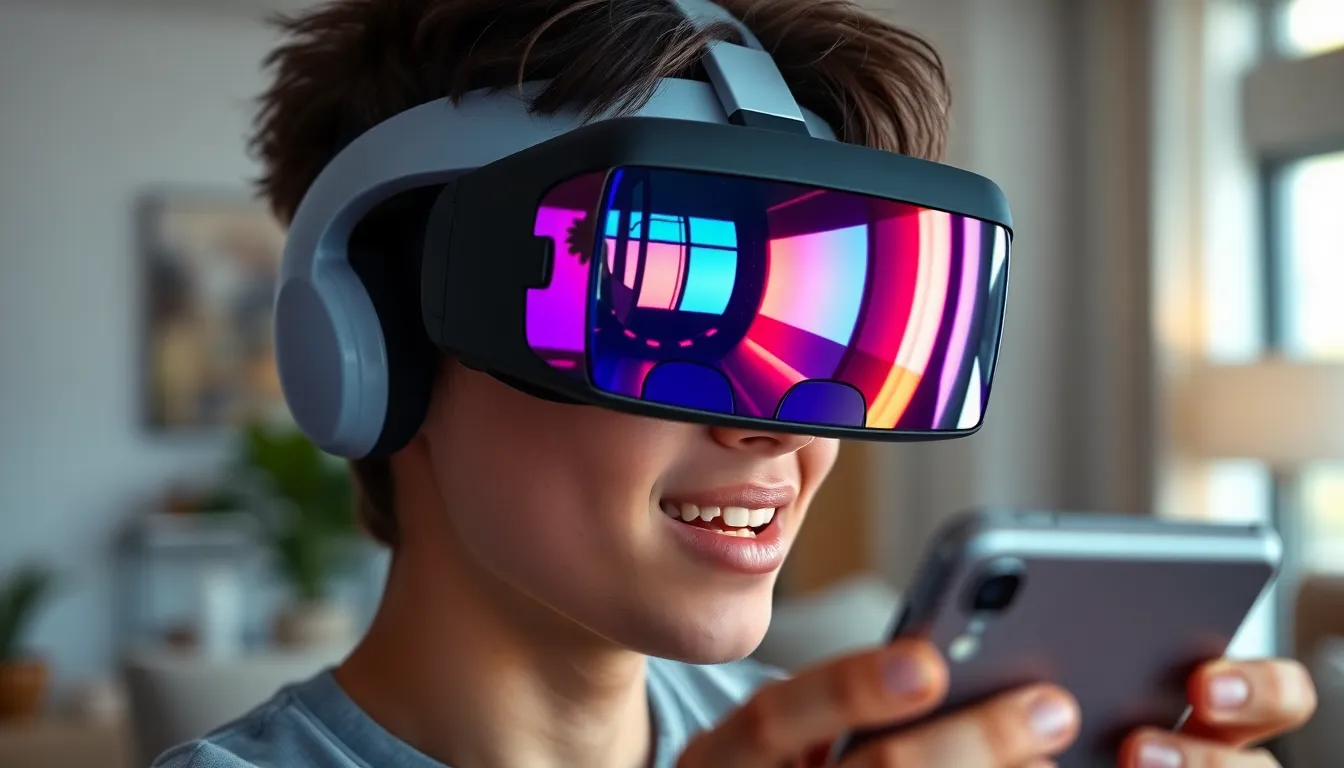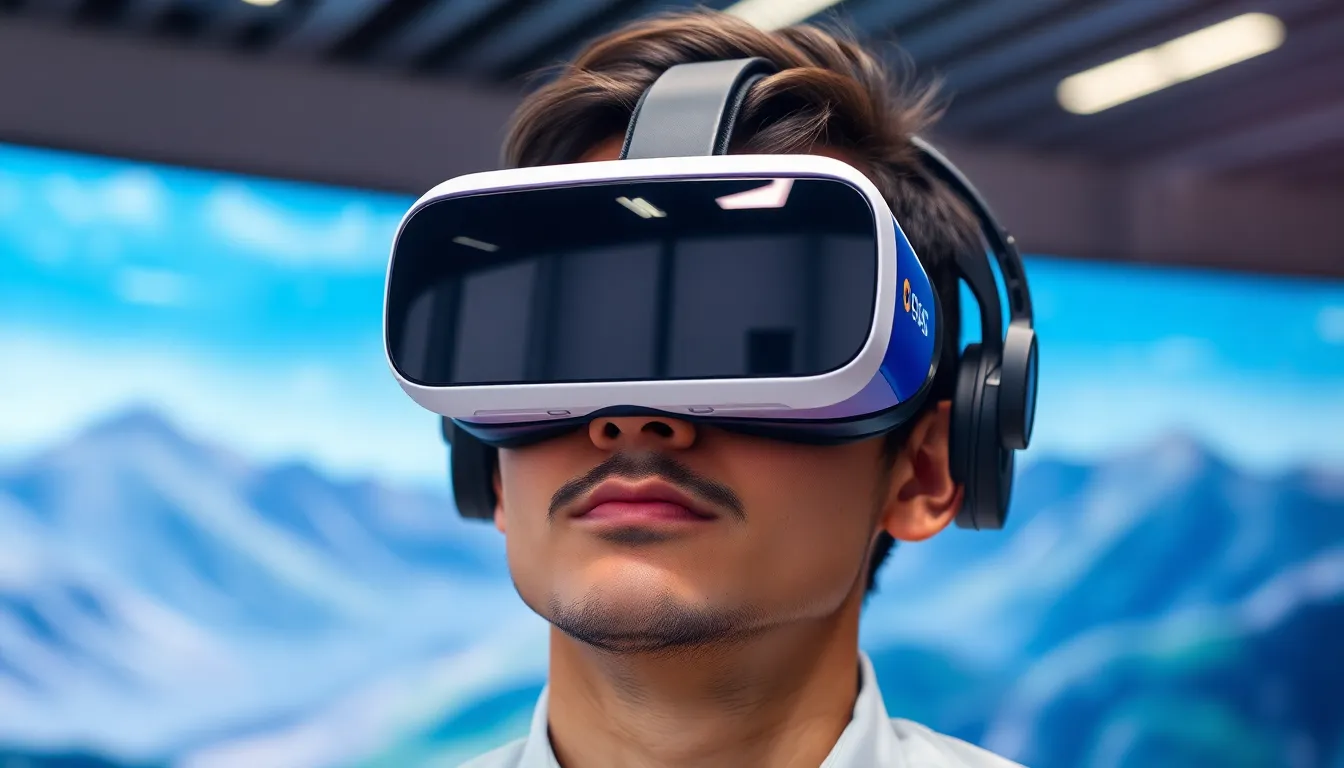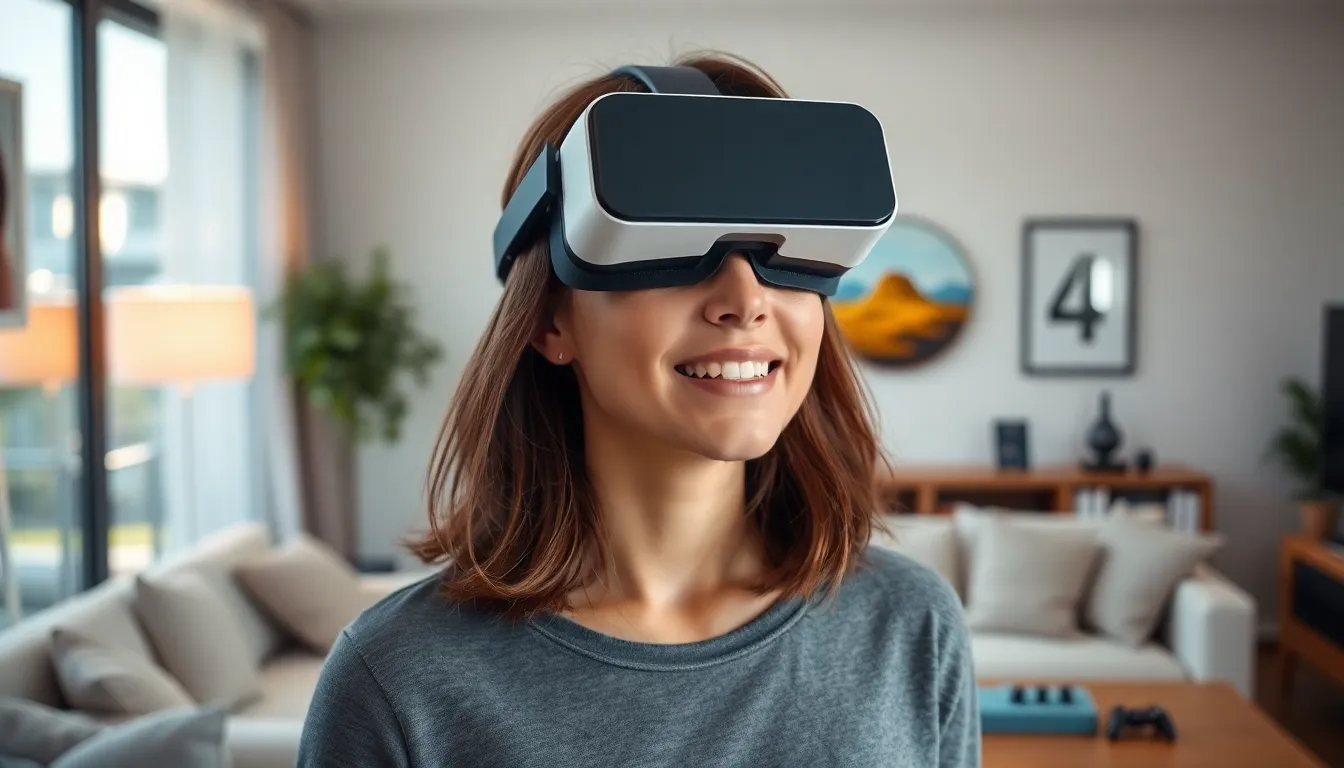Imagine slipping on a headset and finding yourself in a world where gravity doesn’t apply and dragons roam freely. The smartphone VR experience isn’t just a fleeting trend; it’s a ticket to a universe of endless possibilities right in your pocket. Gone are the days of needing bulky equipment or expensive setups. With a simple smartphone and a compatible headset, anyone can dive into immersive adventures that’ll make them forget about their daily grind.
Whether it’s exploring ancient ruins, battling aliens in space, or simply lounging on a virtual beach, smartphone VR transforms the mundane into the extraordinary. It’s not just about entertainment; it’s about connecting with friends and experiencing moments that’ll leave them laughing and gasping in awe. So, buckle up and get ready to discover how this pocket-sized technology can elevate everyday life into a fantastical journey.
Table of Contents
ToggleOverview of Smartphone VR Experience
Smartphone virtual reality (VR) transforms ordinary moments into extraordinary experiences. Users enjoy incredible immersion by simply utilizing mobile devices and VR headsets, eliminating the need for bulky equipment. With a smartphone, one can delve into various environments, such as ancient ruins, vibrant cityscapes, or thrilling space battles.
Content creators design mobile VR applications to enhance user interaction. Popular gaming and educational applications fuel engagement, enabling users to connect with friends and family through shared experiences. Players can participate in collaborative adventures, which strengthens social ties and creates unforgettable memories.
Various headset options, like cardboard-based models or advanced devices, support different budgets and preferences. High-resolution displays deliver vivid visuals, while built-in sensors track head movements to maintain a fluid experience.
Accessibility contributes to the growing popularity of smartphone VR. Individuals can access VR content anytime without expensive equipment or specialized setups. Demographic variations demonstrate that users range from casual gamers to educators seeking engaging teaching tools.
Market research indicates that the smartphone VR industry is rapidly evolving. In 2023, revenue from VR applications surpassed $12 billion, reflecting a significant uptick in user adoption. As technology advances, smartphone VR experiences continue to improve, captivating audiences globally and offering innovative applications across entertainment and education.
Key Features of Smartphone VR


Smartphone VR offers several key features that enhance the user experience significantly.
Display Quality
High-quality displays play a vital role in smartphone VR. AMOLED and LCD screens with high resolutions provide vibrant colors and sharp images. Users experience deeper immersion through better clarity, making environments more realistic. Modern smartphones often support resolutions up to 4K, which enhances detail visibility. Refresh rates above 60Hz contribute to smoother visuals, minimizing motion blur during fast-paced action. Brightness levels also matter, ensuring adequate visibility in various lighting conditions. Overall, advanced display technologies create engaging experiences that draw users deeper into virtual worlds.
Motion Tracking
Accurate motion tracking significantly improves interaction within virtual environments. Most smartphones use gyroscopes and accelerometers to detect head movements. Precision enhances the sense of presence and realism, allowing users to explore surroundings naturally. Some smartphone VR applications incorporate additional tracking solutions, such as external sensors, to fine-tune responsiveness. Tracking accuracy typically ranges from 1 to 3 degrees, which grants users fluid, immersive experiences. Innovations in this area continuously push the envelope, making interactions more intuitive and enjoyable. Enhanced motion tracking allows users to navigate virtual spaces seamlessly.
Popular Smartphone VR Headsets
Smartphone VR headsets enhance the virtual reality experience by providing immersive environments tailored for mobile devices.
Oculus Quest 2
Oculus Quest 2 stands out in the smartphone VR market for its versatility and performance. It features a high-resolution display offering 1832 x 1920 pixels per eye, ensuring vibrant visuals. Standalone capabilities remove the need for a smartphone or PC, making it user-friendly for beginners and enthusiasts alike. With intuitive hand tracking and a vast library of games and applications, it delivers an engaging experience. Users can also connect the headset to a smartphone for additional content, further expanding its usability.
Samsung Galaxy VR
Samsung Galaxy VR provides an affordable entry into the world of smartphone VR. Designed specifically for Samsung devices, it offers compatibility with various Galaxy smartphones. A wide field of view coupled with built-in lenses creates immersive visuals for gaming and media consumption. Users can explore a variety of VR content through popular applications like YouTube VR and Netflix. The comfortable design and lightweight materials ensure extended wear without discomfort, accommodating longer gaming sessions. High-quality sound enhances the overall experience, allowing users to dive deeper into virtual environments.
Applications of Smartphone VR
Smartphone VR boasts a wide range of applications that enhance how users engage with content.
Gaming
Gaming stands at the forefront of smartphone VR applications. Users can immerse themselves in diverse gaming environments, experiencing thrilling adventures in a new way. Popular titles showcase engaging gameplay, capturing the attention of millions globally. Games designed for smartphone VR leverage high-resolution graphics to create realistic settings, enhancing immersion and excitement. Social features allow players to connect, team up, and compete with others, making gameplay more interactive. Industry insights reveal that gaming accounts for over 70% of smartphone VR content consumption, indicating its significance in driving user interest.
Education
Education benefits significantly from smartphone VR technology. Interactive learning experiences captivate students, engaging them beyond traditional methods. Users can partake in virtual field trips, exploring historical sites or complex scientific environments. Applications such as Google Expeditions provide educators with resources to create enriched classroom experiences. Enhanced understanding and retention occur as students visualize concepts in 3D, making complex subjects more comprehensible. Market research indicates that educational apps are gaining momentum, with projections suggesting a growth rate of 25% in the next few years within the VR education sector.
Virtual Tours
Virtual tours revolutionize how users experience travel and exploration. Travelers can journey to popular destinations from the comfort of their homes, exploring cultures and landmarks. Smartphone VR facilitates guided virtual tours of places like museums, national parks, and historic cities, allowing for rich contextual learning. Users enjoy detailed interactions with environments, making these experiences engaging and informative. Companies like Oculus and Voyager VR provide tailored experiences that cater to various interests. Statistics reveal that virtual tour applications are on the rise, with user engagement levels doubling over the past year.
Challenges in Smartphone VR
Smartphone VR faces several challenges that hinder its full potential.
Limitations in Performance
Performance limitations affect the overall quality of the smartphone VR experience. Mobile processors typically can’t match the graphical power of dedicated gaming PCs or consoles. As a result, users encounter lag and lower frame rates, which can disrupt immersion in virtual environments. Moreover, battery life plays a critical role; extended sessions drain batteries quickly, forcing users to take breaks. Storage capacities also limit the number of apps and content available, which impacts user engagement. Newer smartphone models with advanced graphics capabilities help mitigate some of these issues, yet they remain a hurdle for budget-conscious consumers.
Accessibility Issues
Accessibility issues compound the challenges of smartphone VR. Not everyone possesses the latest smartphones needed for optimal VR performance, limiting the audience. Some headsets designed for smartphones are either expensive or uncomfortable, deterring potential users. Additionally, users with disabilities may find it hard to access certain VR content, reducing inclusivity. Internet connectivity also plays a crucial role; slower speeds hinder the downloading and streaming of high-quality VR experiences. While many advancements are made in smartphone VR, ensuring wide accessibility remains a significant concern to enhance user experience.





